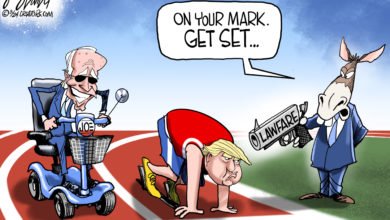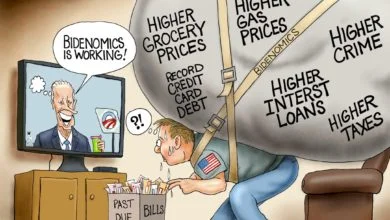Latest jobs number shows V-shaped recovery flattening slightly. Here’s how to fix it.
The Department of Labor just released the jobs numbers for September. The total number was below the prior months which could mean the V-shaped recovery is flattening.
If that’s the case, there are two ways we could fix that to speed up the recovery.
The report indicated that 661,000 jobs were added in September and an additional 145,000 jobs were added to the July and August numbers, increasing the total to 806,000. Under normal circumstances, those numbers would be considered very high, but coming out of the recent recession they are not so good. The total of 806,000 more jobs is below the 1.4 million added last month.
Most other indicators continue to show a growing economy. The construction industry, particularly new homes, is booming. Retail sales, while also slowing from the whopping gains in May and June, are still strong. Consumer confidence and industrial production numbers similarly are pointing to strong growth.
The problem is with personal income, which actually declined in August, although personal consumption did increase by 1%, meaning consumers tapped into savings to pay for their consumption.
After the extremely robust growth in May and June as well as the not quite as robust growth in July and August, September looks like the V-shaped recovery needs some help. There are two things that can be done.
One is to pass another stimulus package. The first package gave $1,200 to virtually every taxpaying adult and $3,400 in total to every four-person household. In addition, the package gave an extra $600 to every unemployed American on top of what was received from their State’s unemployment benefit.
Through the Payroll Protection plan (PPP) money was lent to businesses who, if they promised not to layoff anyone for three months, did not have to repay the loan.
The problem today is the $1,200 or $3,400 has been spent, the extra $600 benefit to the unemployed has stopped and all of the PPP funds have been exhausted.
Passing another stimulus package would have a result similar as the first package. Households would have more money to spend. Households with an unemployed adult would have much more money to spend and businesses would get some help. That sounds good.
Why is a package so hard to pass?
The problem is that the deficit for this year is nearly $4 trillion. Adding more to that is very irresponsible. The House of Representatives wants to spend another $2.4 trillion. The President wants to keep it to $1.5 trillion and the Senate wants the spending to be less than $800 billion. A compromise looks very difficult.
Every dollar spent will have to be borrowed adding to an already burdensome public debt. Prior to this year, the total debt was $23 trillion. Now it’s up to nearly $27 trillion and the new stimulus package would add to that.
The second way to speed up the recovery is to have the half a dozen or so large states fully re-open. New Jersey, New York, Pennsylvania, Illinois, Michigan and California are all keeping some service businesses either completely or at least mostly shut down.
These restrictions are slowing economic growth and flattening the recovery. If these states fully re-opened that would sharply increase economic growth and would lead to a return of the steep V-shaped recovery. It would also eliminate the possibility of a K shaped recovery.
What’s a K-shaped recovery?
That means different parts of the economy are recovering at different rates. Usually, the implication is that the higher income earners are seeing the upward V shape, while lower-income earners are seeing a continued decline. Opening up the service industries and other small businesses would bring those lower-income workers back.
Either one of the two options would remove the downward leg of the K, so all groups would see growth. That means the economy would continue to see the V shape.
The most sensible option is to safely re-open as soon as possible. While there are some health risks, the health and economic risks from staying shut would be greater.
Let’s safely open up and let’s continue with the steep V-shaped recovery.




